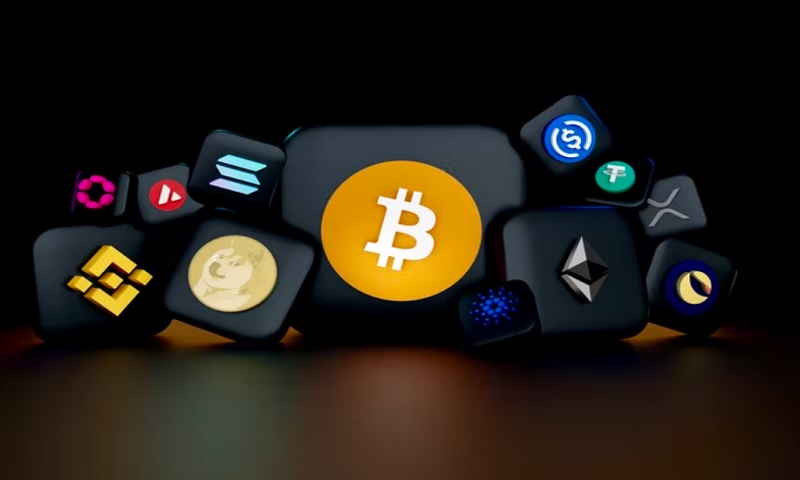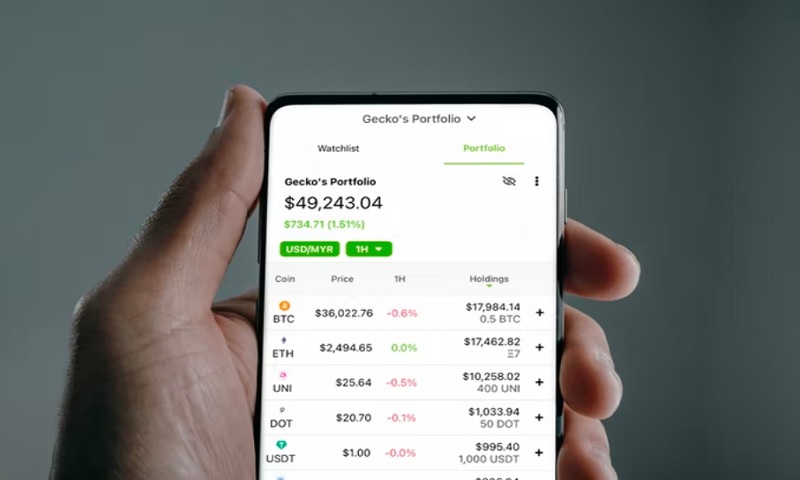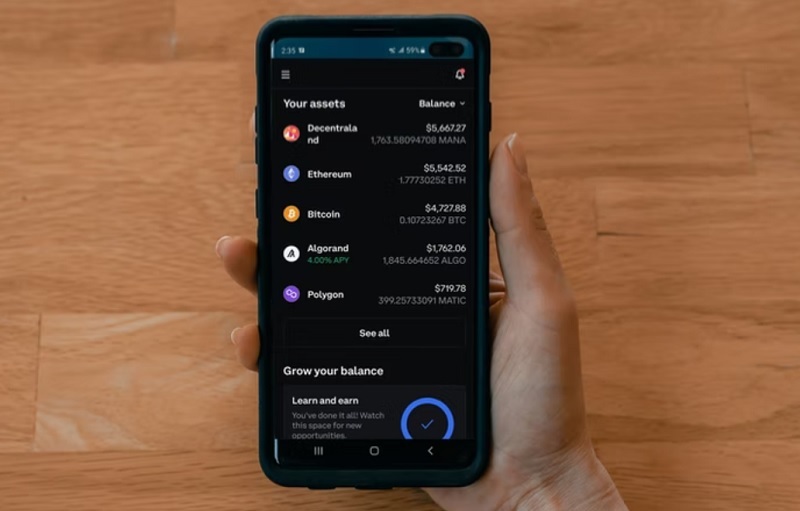Did you know that there are more than 18,000 cryptocurrencies currently in existence? Nevertheless, not all cryptocurrencies are valuable, and some (around 8,000) aren’t even active.
Because of this, it is imperative to make sure you consider your options carefully when investing in cryptocurrency. This is something we are going to help you to do in this blog post by revealing more about a certain cryptocurrency that is making noise for all of the right reasons; Solana.
Solana has made a massive impression in the industry because it can process a block every 400 milliseconds. It is one of the fastest performing layer-one blockchains; Offering enhanced scalability and improved transaction speeds, it is considered a serious rival to Ethereum.
Please continue reading to discover what Solana is, why it was developed, its benefits, and why it is deemed a rival to Ethereum.
Understanding What Solana Is
Solana is a highly-functional open source project that makes the most of a new blockchain, a high-speed, layer-one, and permissionless version.
It was created by Anatoly Yakovenko back in 2017. Anatoly was once an executive at Qualcomm. With the introduction of Solana, he aims to scale throughput beyond what is usually achieved by commonly used blockchains while keeping costs as low as possible.
To achieve this, an innovative hybrid consensus model is implemented, which combines a rapid synchronization engine with a unique proof of history algorithm. The synchronization engine is a type of proof of stake.
Because of this unique setup, the Solana network can theoretically process more than 710,000 transactions every second without requiring any scaling solutions.
This third-generation blockchain architecture has been created to facilitate the generation of decentralized applications (DApp) and smart contracts. The project supports a number of different non-fungible token marketplaces and decentralized finance (DeFi) platforms.
The Solana blockchain was first rolled out in the 2017 initial coin offering (ICO) boom. The internal testnet for the project was released in 2018. After this, there were a number of different testnet phases, which resulted in the official launch of the main network, which happened back in 2020.
What Is Ethereum?
Before we can look at how Solana is a rival to Ethereum, we first need to give you a brief overview of what Ethereum is and how it works.
Ethereum is one of the pioneers in the crypto industry. The first second-generation cryptocurrency, the market has changed thanks to Ethereum forever. Notably, Ethereum was the first blockchain programmable for smart contracts. Smart contracts led to exponential improvements in terms of the functionality of blockchain networks.
Today, it would be incredibly difficult to imagine the blockchain sector without smart contracts. However, this was the case before Ethereum came about.
Ethereum operates as the biggest DeFi and Dapp ecosystem in the world. It is also the second biggest PoW network across the globe.
A lot of people think that Ethereum is a cryptocurrency. This is not the case. It does have a utility token, yet this is known as Ether (ETH). Ether is used to fuel transactions on the network and execute smart contracts.
How Does Solana Rival Ethereum?
To understand how Solana rivals Ethereum, you need to understand what makes Solana different from the rest. Solana parts ways with other blockchains in the manner the consensus is formed among the nodes.
While there are advantages associated with proof-of-history, there are some worries around the voting mechanism Solana has implemented and whether or not it causes centralization.
When using Solana, nodes are required to vote on blocks and the legitimacy of their transaction to become part of the chain. Votes are then sent from the nodes to the leader. The leader is responsible for tallying the votes, and then they will sign off on the block.
When discussing a typical blockchain, proof-of-stake is used to select a validator. This person will generate the next block of transactions, broadcasting this to the rest of the nodes in the network.
After this, the rest of the network will audit the new block against the ledger version. Every node will check its version of the ledger and the new block against the other nodes in the network. From this point, nodes will individually select whether they agree that this new block is legitimate or they don’t.
This process will continue until most nodes agree on the new version of the chain. However, this is a time-consuming process, and that is where Solana is acting as a key differentiator in the market, i.e., by offering a much quicker process.
Understanding The Benefits Of Solana
Let’s delve deeper into the benefits associated with Solana so we can fully understand why experts are predicting it to be a major rival to Ethereum. You can determine whether or not you should buy Solana from sites like Moonpay, Binance, etc, or use your investment elsewhere.
- Solana makes sure that there is composability between projects. You will not need to deal with layer-2 systems or numerous shards as a user.
- As billions of users are already on board, Solana has managed to keep application fees low by achieving economies of scale.
- Solana has also achieved high levels of scalability. It has done this by making the most of proof-of-history and a number of cutting-edge innovations.
- Solana can process a massive 50,000 transactions every second with very low fees, typically around $0.1 or less.
Do Ethereum And Solana Have The Same Objectives?
It is important to understand why Ethereum and Solana were created in the first place. Let’s start with Ethereum. Ethereum was created to provide Dapp developers with a safe and reliable network to work within.
The protocol added smart contract scripting functionality to blockchains, which enhanced the overall usability and functionality of cryptocurrencies. Notable, Ethereum is very flexible when it comes to programming languages. Developers have the option to create using Ruby, Python, JavaScript, Java, C++, and Solidity, amongst many more.
You then have Solana, which was created to support advanced Dapps. The developers on the network made scalability the chief focus for the projects on Solana.
Every network element has been optimized so that throughput and responsiveness are enhanced. In this manner, developers can create more expansive Dapps, conducting bigger computations with lower fees.
Is Ethereum Or Solana Better?
Determining which blockchain is better, Solana or Ethereum, all comes down to your personal goals. Do you prefer a more secure blockchain yet cost more to use as a consequence? Or, are your priorities cost-effectiveness and speed? This is what you need to think about when comparing different blockchains to one another.
If security is your main priority, it will make more sense to go for Ethereum. This is because it has been around since 2014 and is a more mature network, meaning it has had the time to be optimized effectively. However, if you are more concerned about low costs and fast transactions, you will get this with Solana.
In terms of current popularity, Ethereum is winning the battle. Nevertheless, this is not much of a surprise when considering that it has a six-year headstart. Currently, the market cap for Solana is $28 million, whereas this stands at $353 billion for Ethereum. Therefore, Ethereum is the more popular choice, which is included in the NFT space as well. Most of the blue-chip NFT projects currently reside on the Ethereum blockchain.
Final Words On Solana And How It Has Become A Rival To Ethereum
So there you have it: everything you need to know about Solana and why it is a worthy rival to Ethereum.
Ultimately, there is no right or wrong answer when deciding whether Ethereum or Solana suits you. A lot of people will delve into both markets. After all, they are both well-respected blockchains.
The development team at Solana has accomplished its task of creating a reliable and quick blockchain that can power thousands of more transactions compared with Ethereum.
At the same time, Ethereum is still the market’s top-performing network, showing no sign of slowing down.
As is the case when investing in anything, you should never spend more money than you can afford to lose. Nothing is guaranteed when it comes to any cryptocurrency or other investment, for that matter, so you always need to make sure you’re careful.



